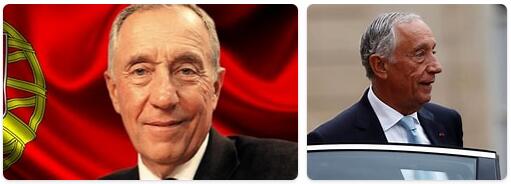Slovenia Government and Politics
State and politics

GOVERNMENT
The Constitution, adopted in 1991, states that Slovenia is a democratic republic, which guarantees human and civil rights to its residents. The government has the executive power and is responsible to Parliament. The prime minister is appointed by the president, but must be approved by a majority in parliament. This consists of two chambers: the National Assembly (Državni zbor) and the National Council (Državni sweat). The Legislative National Assembly has 90 members elected in general elections for four years. In connection with the 2000 parliamentary elections, a 4 percent block was introduced to make it difficult for small parties to enter the Assembly. The Italian and Hungarian minorities are automatically entitled to their respective seats in the National Assembly. The National Council has 40 members elected indirectly for five years as representatives of various social, economic, local and professional groups. It has a mainly advisory function.
The president is the head of state and commander-in-chief and is elected in direct, general elections for a maximum of two five-year terms. In practice, the office is almost entirely ceremonial. Since independence, Slovenia has had four presidents: former communist leader Milan Kučan (1992–2002); Janez Drnovšek (2002–07), leader of the Liberal Democratic Party, LDS, and prime minister almost all the time from independence until 2002; illness prevented him from running for re-election (he died in 2008); the party politically independent former diplomat Danilo Türk (2007–12); and Borut Pahor (2012–), Social Democratic Prime Minister 2008–12.
Slovenia is divided into 210 municipalities, governed by local parishes with a mayor at the head. Local councils are appointed through general elections for four-year periods.
Policy
Independence gave rise to a host of new political parties, often forming around a strong personality. Over time, the party image has stabilized, partly because parties have merged. Many parties have moved towards the middle, the ideological differences are usually not so great and in many important issues there is quite a big consensus. Rather, the contradictions that exist are on the personal level, not often because of what they did during the communist era and the struggle for independence.
In 2011, elections were forced after the incumbent government, led by Borut Pahor, leader of the Social Democratic Party SD, lost a vote of confidence in the National Assembly. The government’s crisis was based on a number of proposed changes, including increased retirement age, presented to the National Assembly to meet the pressured economic situation that the country was experiencing in the late 00s in the wake of the international financial crisis. Pahor’s Social Democratic Party received only 10.5 percent of the vote in the 2011 election and lost 2/3 of its seats in the National Assembly.
The government power was taken over in February 2012 by a broad middle-right government. Prime Minister and Head of Government became Janez Janša from the Liberal Conservative Slovenian Democratic Party, SDS. The party became the second largest party (26 percent) in the early parliamentary elections that took place in December 2011. Most votes (29 percent) received the newly formed Party Positive Slovenia, LZJ-PS, led by the charismatic Zoran Janković, former mayor of Ljubljana. However, he failed to gather enough support from the National Assembly to form a government, after which the initiative went to Janša.
Following allegations of corruption, Janša was dismissed in February 2013 by Parliament, which asked Alenka Bratušek, who resigned as temporary party leader for Positive Slovenia instead of the similarly-accused Janković, to form a new government. Since she lost the fight for the party leader post to Janković in April 2013, Bratušek filed her and the government’s resignation application in May.
In the new election in July 2014, the newly formed center-left party got Miro Cerar’s party, SMC, led by legal professor Miro Cerar, 36 out of 90 seats and thus became the largest party. Cerar was appointed prime minister and formed a coalition government with the pension party DeSUS and the Social Democrats.
In the 2018 election, xenophobic SDS received the most votes (24.9 percent) but failed to form government. After prolonged negotiations, five middle-left parties agreed on Marjan Šarec as prime minister. Šarec leads the party Marjan Šarec’s list (LMS, 12.6 percent) which became the second largest party of the election. Government cooperation became turbulent and after a series of ministerial defections, Prime Minister Marjan Šarec also left his post in early 2020.
Compare the History section.
Judiciary
After the disintegration of Yugoslavia in 1991, the mainly codified legal system in Slovenia gradually adapts to the needs of the market economy, but the basis of the legal system is the former Yugoslav legal heritage. The death penalty was abolished in 1989.
Heads of State
Presidents
| 1990-2002 | Milan Kučan |
| 2002-07 | Janez Drnovšek |
| 2007-12 | Danilo Türk |
| 2012- | Borut Pahor |



